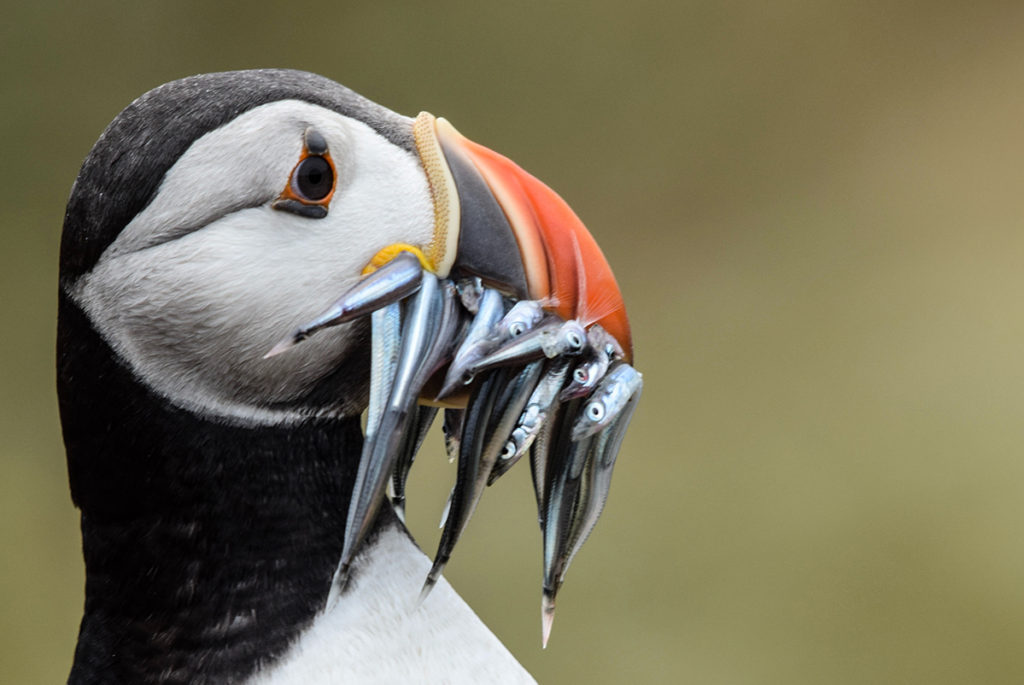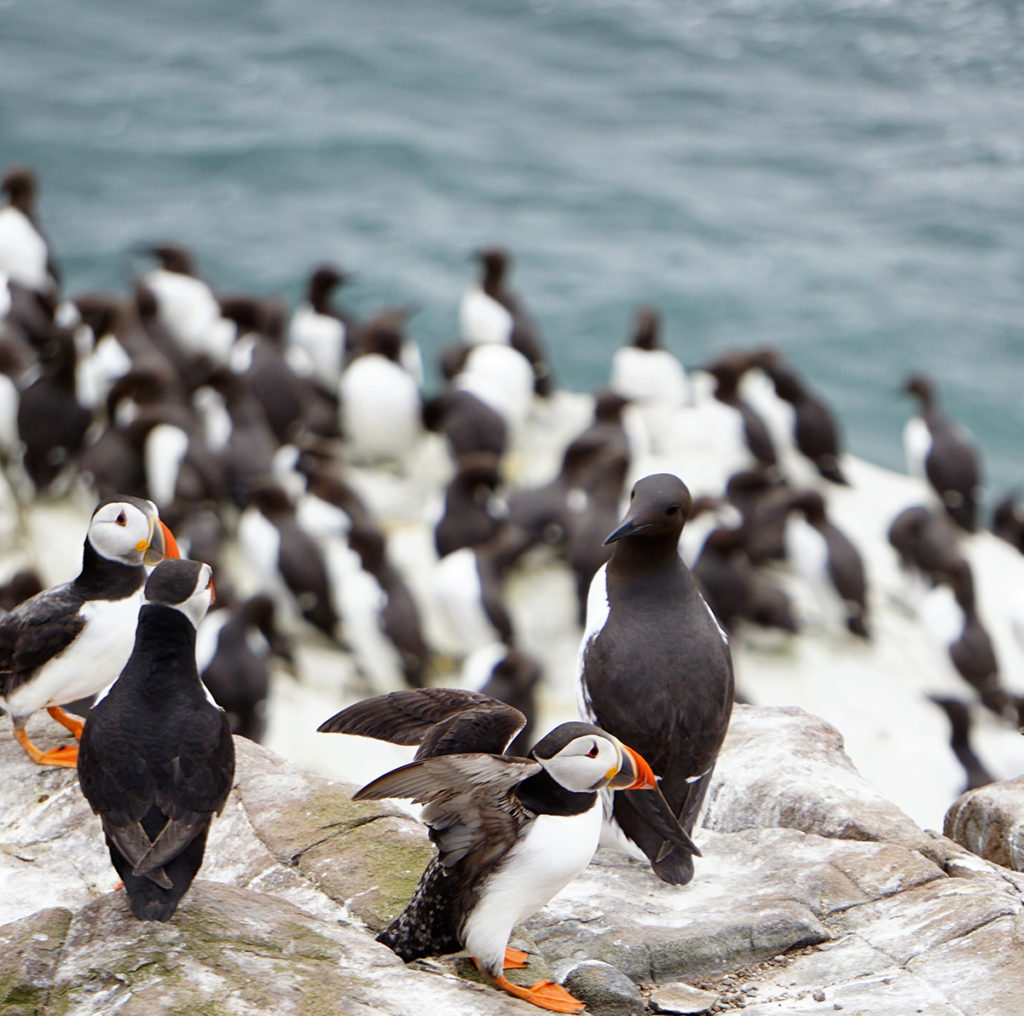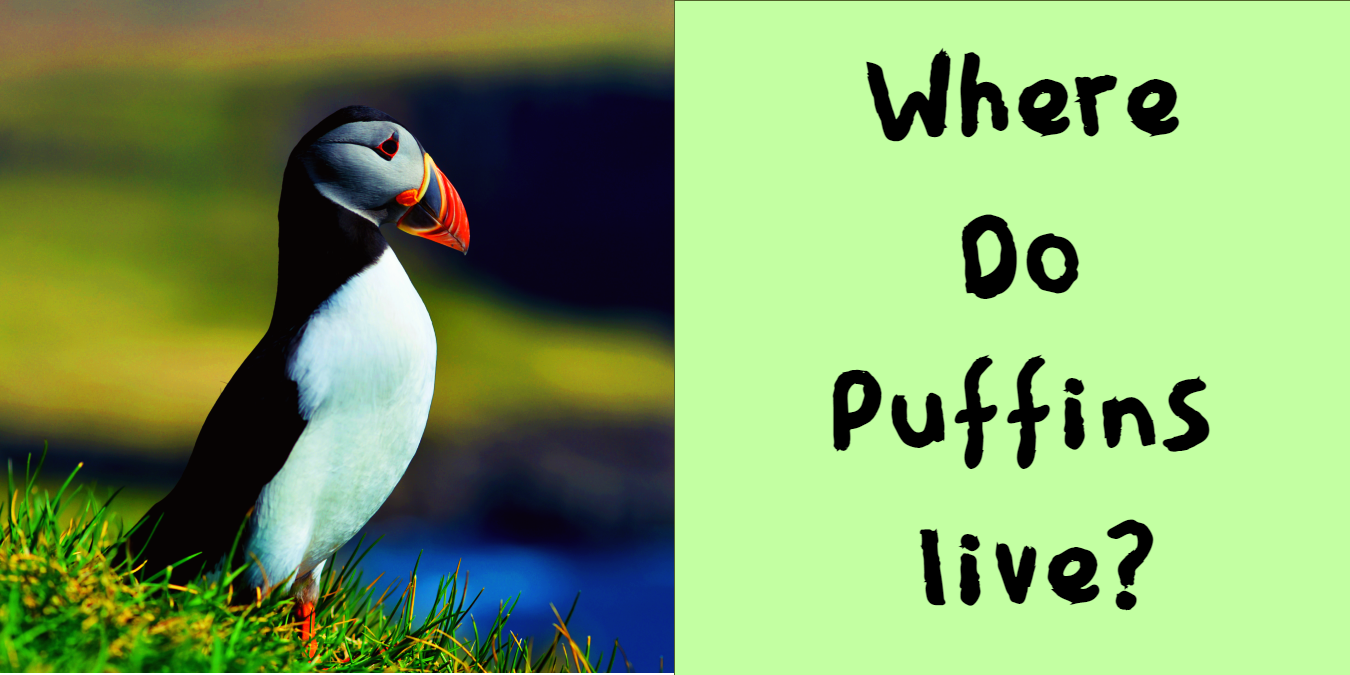Known as “the clown of the sea”, Puffins are beautiful birds, full of character with a striking appearance and a love of the ocean. Like most birds, Puffins are migratory, but they remain in the Northern Hemisphere. There are four species of Puffin; Atlantic, Tufted, Horned and Rhinoceros Auklet. So, where do puffins live?
Puffin Colonies
Puffins are seabirds, spending most of the year at sea and breed in coastal spaces such as cliff edges or crags. Puffin colonies can be found in the Atlantic, Pacific and the Arctic Circle. Almost 60% of the world’s puffins make their breeding homes in Iceland, while the UK is home to approximately 10% of the planet’s puffin population.
Other popular places for Atlantic puffins include Norway, Denmark, Sweden, UK, Greenland, Canada and North America. In winter they travel to New York, Spain, the Canaries and Morocco. The Tufted and Horned puffins are Pacific species that live in large colonies between Canada and Japan, including most of Western Europe and Northern Russia. They spend the winter as far south as California. Rhinoceros Auklet puffins are found predominantly along the Pacific Coast of North America and travel to Northern Asia for winter.
Puffin Appearance
Puffins are one of the world’s most recognisable birds. They look like miniature penguins with their black wings, tail and head, chubby white cheeks, a necklace of black feathers, bright orange feet and a striking triangular beak with grey, yellow and red markings.
During the winter months, Puffins lose their bright beak coloration, and have more muted grey colours to their beak and face. In addition, their legs and feet also lose colour, fading to a pale yellow. Once spring comes around, they brighten up. Scientists believe, this coincides with the start of the breeding season. Darker plumage is useful during winter as they are able to absorb more heat.
Puffins are small seabirds, with males slightly larger than females. Adult size and weight is dependant on the species.
| SPECIES | LENGTH | WEIGHT |
| Atlantic Puffin | 30cm long/50cm wingspan | 380g/0.84lbs |
| Rhinoceros Auklet | 30cm long/60cm wingspan | 620g/1.4lbs |
| Horned Puffin | 48cm long/60cm wingspan | 620g/1.4lbs |
| Tufted Puffin | 40cm long/65cm wingspan | 780g/1.7lbs |

Tufted puffins have no white plumage but still have the same white face and brightly coloured beak. On the other hand, Rhinoceros Auklets are dark grey instead of black with no white facial markings.
Puffin Diet & Feeding Behaviour
Being seabirds, it is no surprise that puffins eat fish. They are one of a small number of bird species able to carry fish crosswise in their beaks. Their rough tongue also helps to hold fish against the palate of the beak, making it possible for them to catch more fish.
Puffins catch their prey by diving, which they can do for up to one minute and as deep as 60 meters. The Rhinoceros Auklet can stay under water for 2-2½ minutes. Puffins use their wings to change direction, much like they do during normal flight. They also use their feet like the rudder of a boat.
The favoured fish for puffins are sandeel, herring and capelin, but they are also known to feed on krill. Rhinoceros Auklets will also occasionally eat squid. The fish they eat depends on where the puffins live at any given time. Their fish diet may change slightly during the breeding season in summer and their migratory home in the winter.
Also Read: Where Do Hummingbirds Go in the Winter?
Puffin Social Behaviour & Breeding
Puffins may look like little miniature penguins, but they are more physically adept. While penguins are grounded birds, puffins can fly, with speeds up to 88km/h. They can also “fly” in the water, using their strong wing muscles to change direction. On land, however, puffins are clumsy.
Social interaction is very important for puffins and they congregate in huge colonies both at sea and on land. Just like most prey animals, safety in numbers seems to be the idea here.
For small birds, puffins live a long time, with a lifespan of around 20 years. They do not reach sexual maturity until 3 years of age, but many wild birds will not reproduce until the age of 5. Puffins are monogamous birds, meaning they mate for life, returning to the same breeding colonies and the same nest site every year. Mating rituals involve a practice called “billing”, where a male and female pair will rub their beaks together.

When it comes to nest building, puffins will either dig a burrow in soft soil along a cliff edge or utilize a natural hole between rocks. The female will lay a single white egg and both parents will take turns to incubate and protect the egg. Egg laying typically starts in April and can last until June. Chicks, known as pufflings, hatch after 36-45 days depending on the species.
Parents will take turns flying out to sea to catch fish for the chick. Puffin parents do not regurgitate food like other birds. Instead, they bring back whole fish for the chick to eat. Pufflings usually leave the burrow around 7 weeks of age.
Puffin Predators
The biggest predator of puffins is the Great Black-backed gull, a bird big enough to snatch puffins straight from their burrows or out of the air. Other puffin predators include
- Foxes
- Rats
- Mink
- Hawks
- Eagles
Herring gulls are not a predator species but they are a pest and have been known to steal food straight from an adult puffin’s beak.
You may wonder, are puffins endangered? While puffin numbers are still generally good, overfishing and ocean pollution caused by humans is beginning to have an impact on their survival rate. Both the horned and tufted species are listed as “least concern” on the IUCN red list, while the Atlantic puffin is classified as vulnerable.
Also Read: What Do Walruses Eat?
Puffin Fun Facts
- Rhinoceros Auklets are nocturnal, which is why experts know so little about them.
- Puffins can flap their wings up to 400 times per minute.
- The largest puffin colony was estimated to be almost 4 million. On the Westman Islands in Iceland, there are more than 1 million puffin burrows.
- Puffin chicks are born with grey, black and white fluffy down feathers.
- Puffin parents can feed their chick up to 100 times per day.

